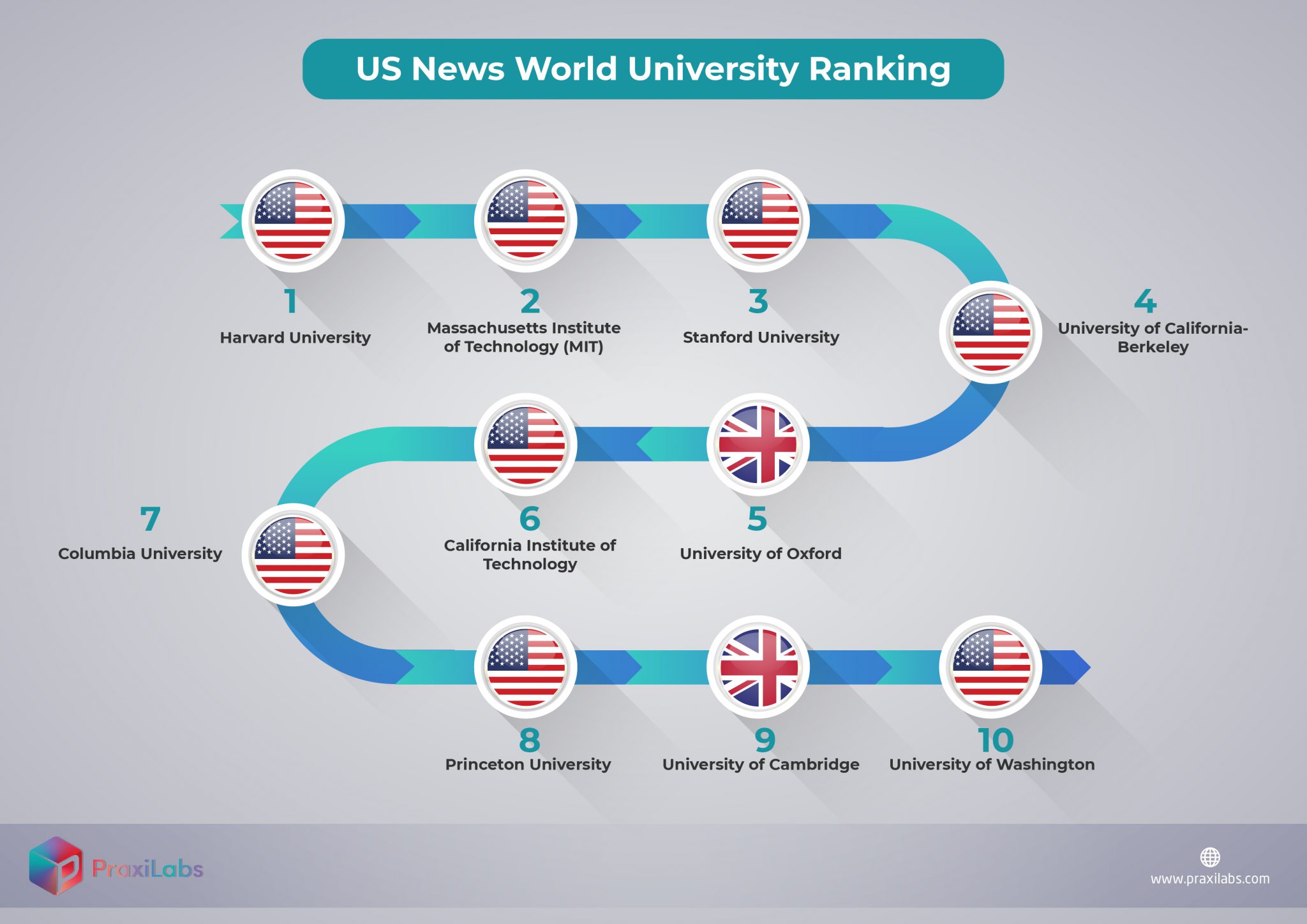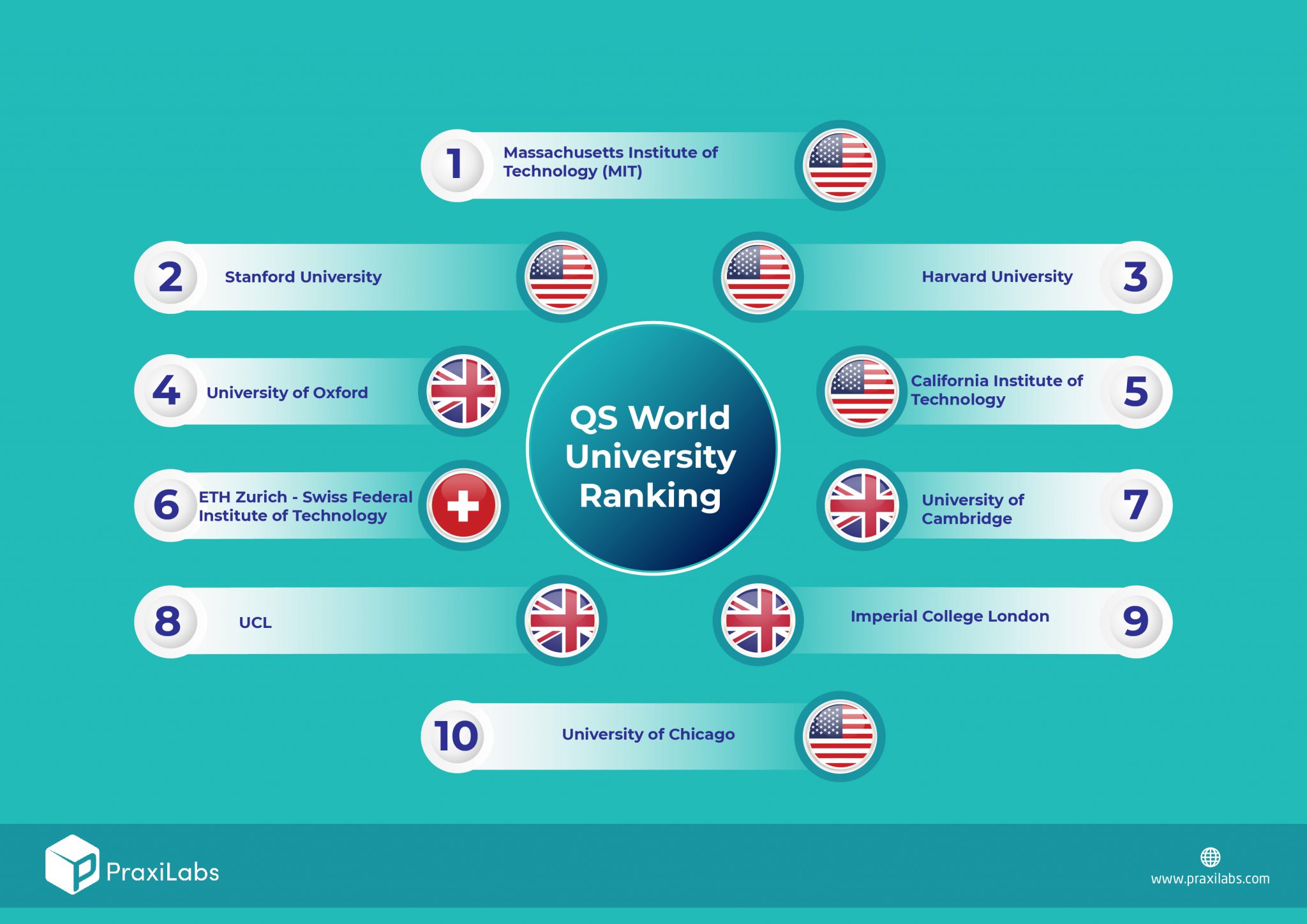Last Updated on June 20, 2022 by Mostafa
The world ranking of universities is the focus of attention of every faculty member, as well as students who aim to continue their university studies. It is also a matter of concern for employers wishing to appoint graduates.
Therefore, each university seeks to improve its world ranking to attract more students and researchers. Moreover, it aims to provide good job opportunities for them among the employers of international companies around the world.
Try PraxiLabs Virtual Lab For FREE!

The methods of evaluation universities differ from one foundation to another according to their evaluation indicators. Therefore, there is a variation in the universities’ world rankings, according to the criteria of each foundation: 3 types.
Some foundations, the first type, evaluate universities based on their contribution rate in the international publication of researches and the extent of the impact of its researches in the academic community, where the citations number is included within the evaluation.
The second type of foundations classify universities based on the extent of their popularity among academics and the opinions of operators. The third type is institutions that classify them according to the development of educational technology in those universities.
View the newest technological application in the education field. You can try your free trial of virtual science lab provided by PraxiLabs from here.
Get Started Praxilabs For FREE
In this article, we will address the most popular universities’ international rankings and their evaluation indicators. We will also list the latest ranking for 2020 for world universities.
Table of Contents
The Most Popular University Rankings:
The global rankings of universities differ according to each foundation. Some foundations are concerned with evaluating specific academic programs in terms of their quality. For example, the Financial Times classification is concerned with evaluating study programs in the MBA only.
Further, we find some rankings that are limited only to evaluating universities in specific country such as the classification of Indian universities (QS I·GAUGE), while others provide an evaluation of all disciplines and stages of higher education in the world. The most famous examples of this type are US News and QS, and each example follows a different evaluation method, so we find a difference between the two categories.
1- US News Ranking:

US News Network is an American media network that was launched in 1933 as a news magazine. Then it became a television channel and then its website was launched, with its headquarter being located in Washington, D.C. This network is concerned with the political, cultural, and sports news in addition to all educational updates. And the ranking of local and international universities is considered as one of the most important services available on the network. In the following paragraphs, we will take a look at the ranking indicators of US News for universities.
This video shows the 10 top universities in the United States of America over 36 years, according to the US News ranking.
The US News system relies mainly on two main indicators [1]:
Join Us Now for FREE
1- First, building a database of more than 1500 universities, including the best 250 universities according to the annual academic survey of Clarivate Analytics website, where those universities must achieve a prerequisite: the academic publishing rate for each of them should exceed 1500 papers during five years from the beginning of 2013 until the end of 2017.
2- Secondly, universities are evaluated based on 13 indicators, which are
- Global research reputation.
- Regional research reputation.
- Publications.
- Books.
- Conferences.
- Normalized citation impact.
- Total citations.
- Number of publications that are among the 10% most cited.
- Percentage of total publications that are among the 10% most cited.
- International collaboration, relative to country.
- International collaboration.
- Number of highly cited papers that are among the top 1% most cited in their respective field.
- Percentage of total publications that are among the top 1% most highly cited papers.
QS Ranking:

Quacquarelli Symonds is a British education company, established in 1990 by Nunzio Quacquarelli.
QS ranking depends on the following 5 main indicators[2]:
A- Academic Reputation
Academic reputation is the most important factor in the QS ranking. It is based on a survey of more than 94,000 professors and researchers worldwide to assess the academic reputation of each university.
B- Employer Reputation
This indicator is based on a survey that is the largest of its kind in the world—carried out by QS—which collects the opinions of more than 45,000 employers around the world about the most foundations that provide the market with highly qualified graduates that suit their needs.
This video shows Arab universities ranking according to QS.
C- Faculty/Student Ratio
One of the main indicators for the education quality is the proportion of the faculty members to the students. The higher the percentage, the better the learning opportunities for students.
D- Citations Per Faculty
Citations are an indication of the research quality for each university. So, QS website calculates the ratio of the number of citations from all research contributions of the university over 5 years to the number of faculty members and researchers who are working at the university.
E- International Faculty Ratio and Student Ratio

The proportion of international students and faculty members is an indicator of the university’s popularity worldwide. Furthermore, the multinational environment helps students and faculty members to develop their knowledge and culture.
How Can We Benefit from the World Universities Rankings?
The importance of the world universities rankings is not limited to students who choose their academic destinations. But there are many other useful uses for them.
The most important use for rankings is the utilization of this data by governments to give funds and support to the universities that have the ability to become World-Class.
For example, Saudi Arabia chose 4 universities to be within its scope of interest, in order to make them among the top 200 universities in the world by 2030.
Try 3D Virtual Labs Now
Sources:
1- https://www.usnews.com/education/best-global-universities/articles/methodology
2- https://www.topuniversities.com/qs-world-university-rankings/methodology
